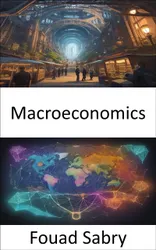What is Two Part Tariff
A two-part tariff (TPT) is a form of price discrimination wherein the price of a product or service is composed of two parts - a lump-sum fee as well as a per-unit charge. In general, such a pricing technique only occurs in partially or fully monopolistic markets. It is designed to enable the firm to capture more consumer surplus than it otherwise would in a non-discriminating pricing environment. Two-part tariffs may also exist in competitive markets when consumers are uncertain about their ultimate demand. Health club consumers, for example, may be uncertain about their level of future commitment to an exercise regimen. Two-part tariffs are easy to implement when connection or entrance fees can be charged along with a price per unit consumed.
How you will benefit
(I) Insights, and validations about the following topics:
Chapter 1: Two-part tariff
Chapter 2: Microeconomics
Chapter 3: Monopoly
Chapter 4: Monopolistic competition
Chapter 5: Perfect competition
Chapter 6: Imperfect competition
Chapter 7: Deadweight loss
Chapter 8: Economic surplus
Chapter 9: Price discrimination
Chapter 10: Profit maximization
Chapter 11: Economic equilibrium
Chapter 12: Monopoly profit
Chapter 13: Allocative efficiency
Chapter 14: Marginal revenue
Chapter 15: Ramsey problem
Chapter 16: Pricing strategies
Chapter 17: Market distortion
Chapter 18: Profit (economics)
Chapter 19: Monopoly price
Chapter 20: Markup (business)
Chapter 21: Double marginalization
(II) Answering the public top questions about two part tariff.
(III) Real world examples for the usage of two part tariff in many fields.
Who this book is for
Professionals, undergraduate and graduate students, enthusiasts, hobbyists, and those who want to go beyond basic knowledge or information for any kind of Two Part Tariff.
























